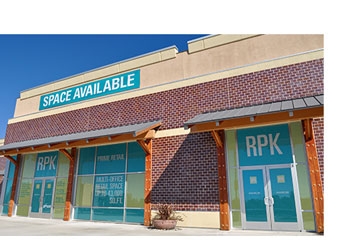Producing great signage that can stand out from the competition has been an ongoing challenge for print shops in the graphic arts industry.
Signage ultimately has two real jobs—to get your audience’s attention and to convey a message that sticks. It sounds simple, but given the broad scope of the signage industry, the competition is fierce and finding ways to be seen as an innovator can be an uphill battle. And with the ISA estimating double-digit percentile growth across all of the graphic arts areas such as signage, point-of-purchase display, vehicle wraps, and more, well into 2016, it is more important than ever for sign shops to know how to differentiate their offerings.
So what do sign shops need to know to effectively overcome competitive challenges? And what solutions and applications can they use to keep current customers happy while driving in new customers and revenue?
While there is no set formula for success, there are definitive steps a printers can take in order to maximize its potential. Some things to be considered include:
Having a Strategy or Multiple Strategies
Multichannel options. Companies today want to do more than just produce a billboard or banner but rather want those same graphics to be replicated for direct mail brochures or a digital display that can be viewed by clicking on a QR code with a mobile device.
This can be a tall order and shops need to learn how to not just produce great quality signs, but be marketing service providers that can cost-effectively provide a multichannel signage approach that incorporates print, online, social media, and more.
Digital signage. More and more companies are looking for ideas around when and how to use digital signage and are looking to their print and marketing service providers to help them understand when the business result is worth the added cost.
Understanding the nuances of digital signage and what campaigns will bring them the most ROI as part of a multichannel strategy can be what makes a sign shop truly stand out to its customers as a holistic partner and not just a commodity vendor.
Sustainability or green printing choices. The business world has been going green for a long time. Incorporating eco-friendly practices and sustainable products is important and won’t just make a printer look more environmentally stable in its customers’ eyes but can also help reduce costs.
Taking a green approach can be as simple as evaluating the sustainability of your paper and ink choices. For example, water-based latex inks used in some wide format printers can contain less VOCs (volatile organic compounds that are emitted in printing) than traditional, non-water-based wide format inks.
Deciding on Hardware and Software
The current generation of graphic arts solutions empowers signage shops to print high-quality signs, banners, wraps, point-of-sale displays, and more that really “pop.”
Because most print shops are on tight budgets, when choosing equipment, it’s important to know what the need is—such as large format signage, more color options, substrate versatility, or a combination of all. Flexible hardware will be key and most print shops will want to find hardware that enables a wide variety of eye-catching applications on unconventional substrates like stone, metal, and specialized paper.
Two other important areas to address when deciding on hardware options include color capabilities and finishing options.
Having versatile color options—including green, orange, white or even clear—ensures that when that job comes in that needs white images on a black background, a print shop can take it and generate the necessary “wow factor.”
A bad dessert can be the ruination of a dinner, regardless of the quality of the rest of the meal; such is the importance of finishing options. Without that right gloss coat or specially shaped stock, the final piece can come out looking half-done. So print shops will want to ensure the equipment chosen comes with a wide variety of finishing features.
Software once took a backseat to hardware, but not anymore.
Software can include workflow solutions that automate manual tasks and reduce error and waste; color management software that ensures that perfect fire engine red; and campaign management tools that allow for cross-media options that bring together all the necessary elements of a Web-to-print campaign, ensuring cohesive branding. The right complementary software can be the difference between producing competitive cost-effective high-quality jobs and not.
Understanding the Need for Professional Services
Providers that do more than just sell you solutions but become your partners and consultants can help you establish a process for ensuring equipment features are utilized to their maximum capabilities, accurate color reproduction is done across all pieces within a campaign, and quality is maintained throughout. This can be very helpful in meeting and exceeding customer expectations.
Working with a vendor that you can build a relationship with (in the form of training and ongoing support) can make a tangible difference—both in your understanding of how the equipment works in your shop and in how to produce signage that will execute your customers vision and goals successfully.
While every shop is different and needs are shaped by current customers, desired business growth areas, and market geographies, having the right mix of strategies, solutions, tools, and services in place will help you serve your customers better, open up new revenue opportunities, and foster successful, high-quality, and innovative signage that stands out from the pack.
By John Fulena, vice president, Production Printing Business Group, at Ricoh. http://www.ricoh-usa.com











